Earlier this month, the World Health Organization published the WHO Digital Health Intervention (DHI) Classification to introduce a framework for classifying digital health interventions. D-tree welcomes this advancement and framework, which helps us communicate the work we do. In this multi-part blog series, we share how we work with partners to face challenges and meet the needs of various stakeholders: Clients, Providers, Managers and Data Services.
WHO created this classification to help support dialogue between public health practitioners and technology, something we are very familiar with as we lay at the intersection between the two. We are excited to use the resource going forward and finally speak the same digital solution language across continents and programs!
Looking at the eight WHO Health System Challenges outlined in the DHI Classification resource, we can certainly relate. From information access issues to utilization and efficiency, we hear, see and experience these challenges over and over again, and have been committed to addressing them. In this post, we share spotlights on how we’ve tackled challenges, with examples from our programs: Maternal and Newborn Heath, Sexual and Reproductive Health, Child Health, Health System Strengthening, and Emergency Transport.
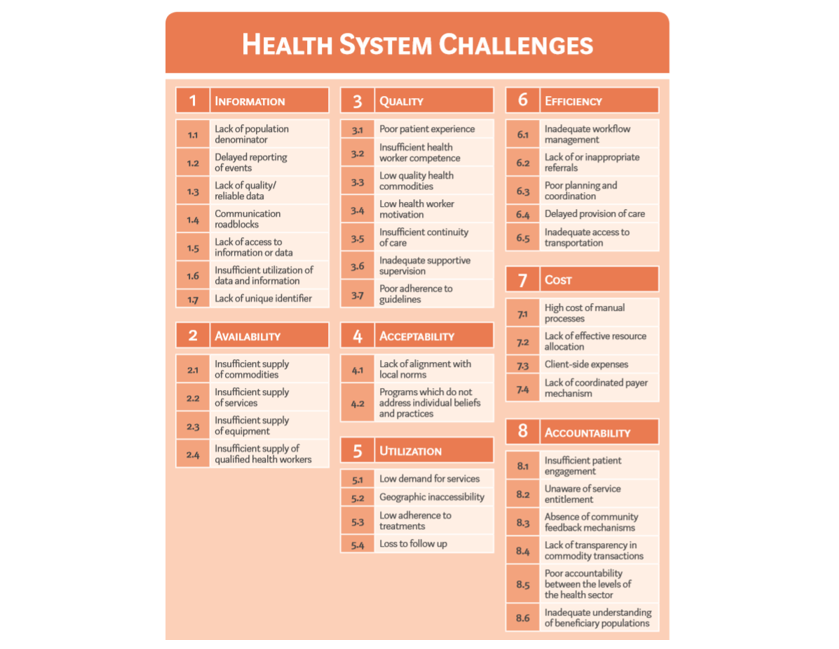
I. INFORMATION
Over the years our partners have expressed challenges with information accessibility and use. They often don’t know what data is being collected by various solutions, and then they aren’t able to use the information effectively for program improvement. We work with partners to use and interpret data to guide the best workflow as well as to improve program performance. For instance, our frontline health workers follow screening and referral protocols for client management, based on information collected about the client. Then we work with health workers, supervisors, and program managers to evaluate dashboards, identify areas of improvement and track progress over time.
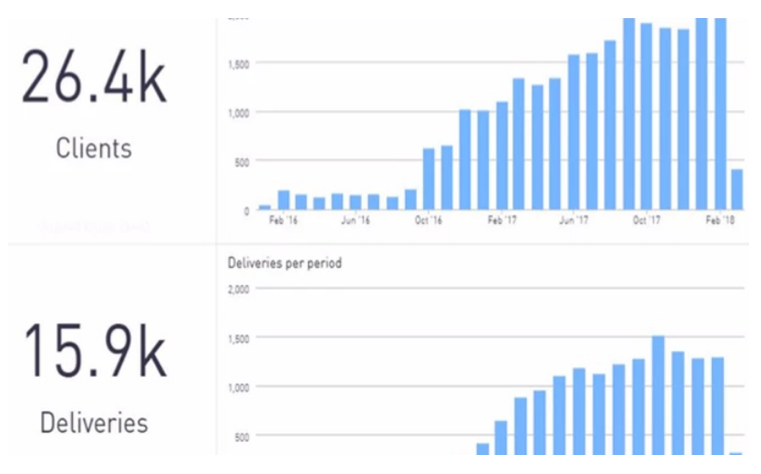
SOLUTION SPOTLIGHT: District Health Management Teams analyze dashboards and create action plans to improve maternal health in their communities.
II. AVAILABILITY
Often resources are not available for services- immunizations, medications, or family planning methods- both at a health facility and with community health workers. This insufficient supply affects the quality and efficiency of care. To address this, we’ve developed solutions which enable supervisors and health workers to provide bi-directional feedback to evaluate and communicate available resources. Supervisors and community health workers use this information so they know the resources that they can provide to beneficiaries. We also share the information with the government so they can influence policy and funding decisions for low stock items.
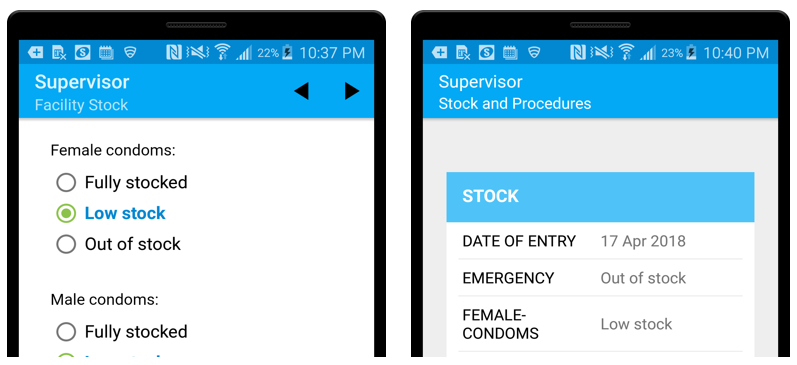
SOLUTION SPOTLIGHT: Supervisors evaluate stock of methods and procedures for family planning at a facility and communicate to the community health workers and facility administration.
III. QUALITY
From poor patient experience, to low health worker motivation, to lack of continuity of care, quality healthcare services is a challenge in many health systems. We address various levels by integrating quality assurance mechanisms for multiple stakeholders and processes. For instance, our program content is evidence-based and validated with our partners for quality and effective services. We also incorporate health worker motivation schemes and supervisor structures to promote adherence to the processes.
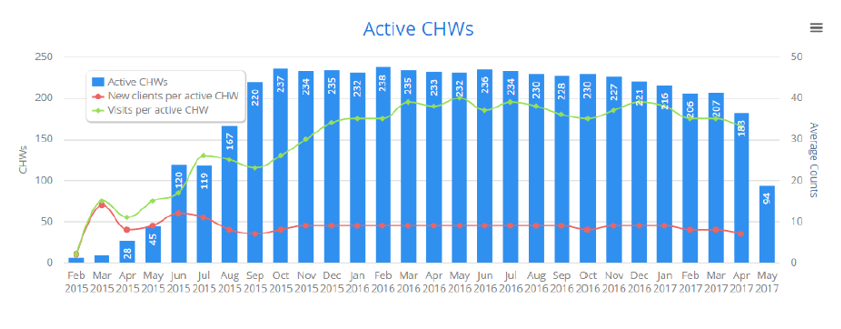
SOLUTION SPOTLIGHT: Health workers follow evidence-based protocols for community case management, child and maternal health. They then engage in pay for performance motivation schemes.
IV. ACCEPTABILITY
We cannot implement programs without understanding the context of the community or the individual client concerns. We can develop a technology, but in order to make sure a solution is adopted, we must consider the challenges and motivations of all stakeholders in a health system. We do this by working with local religious groups and community leaders who communicate about the program activities. We also ask the client questions about their beliefs and preferences, which then influence the rest of the health worker visit.
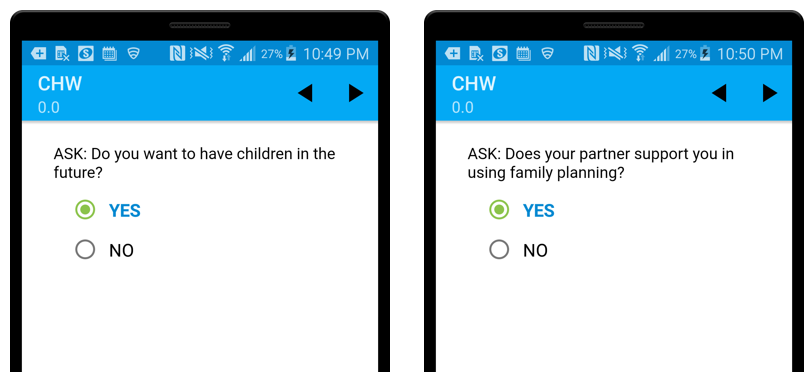
SOLUTION SPOTLIGHT: Health workers evaluate client beliefs and preferences about family planning, and involve males in the decision making process as well.
V. UTILIZATION
Healthcare access without healthcare utilization is a waste of resources. Our digital health systems support education of clients about available programs to build the demand for services and knowledge about when to use services. Beneficiaries have a close relationship with the frontline health worker, who helps with adherence to medication or condition protocol, and then links them to services as needed. Many of our programs even address issues related to geographic accessibility to services by connecting clients with drivers for transportation to a facility.
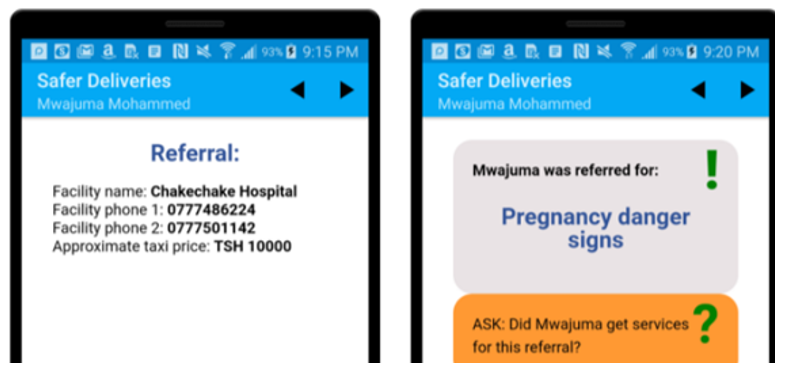
SOLUTION SPOTLIGHT: Community health workers refer and schedule follow up visits to ensure adherence to maternal health antenatal and postpartum care.
VI. EFFICIENCY
Inadequate workflow management, lack of appropriate referrals and lack of coordination and transportation can delay care and reduce efficiency of care received. We work to make sure that clients reach the right care at the right time through solutions that facilitate appropriate referrals based on the client’s conditions, and incorporates protocol for the most appropriate workflow management. Our solutions also promote coordination and data sharing between different stakeholders so there is continuity across different parts of the workflow, between facilities and community health workers.
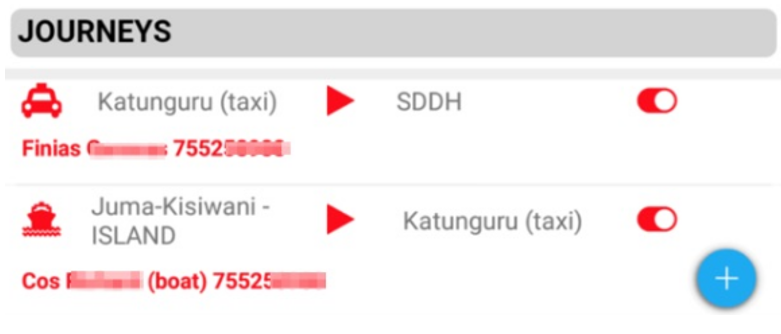
SOLUTION SPOTLIGHT: Dispatchers communicate with drivers for emergency transport to maternal health care services to ensure timely care.
VII. COST
Clients often face high and unexpected costs throughout their care. We support cost transparency by creating solutions that prepare the client for costs and identify high cost areas. One way we do this is through community health workers who ask clients questions about how much they pay for services (e.g., for example for delivery) and what they are paying for. Through analyses, partners can identify the cost that clients incur, and choose to implement policies to reduce the client cost burden. In one program, our partner identified that clients were paying too much for care because reagents were out of stock at the facility. The partner then worked with the government to obtain funding for the reagents so that the client did not need to incur that cost.
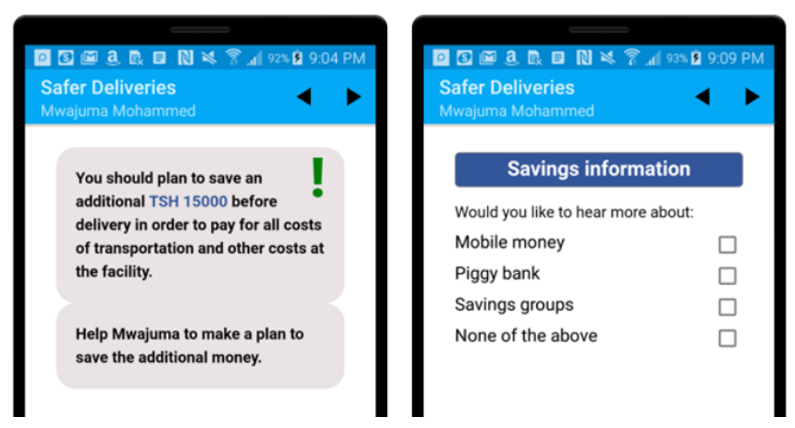
SOLUTION SPOTLIGHT: Clients are connected with savings groups during birth planning. They understand how much they need to save for a delivery and the different ways to save.
VIII. ACCOUNTABILITY
Transparency is key to ensure accountability of quality services. With multiple individuals involved in a beneficiary’s care, it is sometimes hard to identify where issues begin and who needs to resolve them. As a result, programs remain stagnant with low performance. To address this, we developed a Citizen Feedback component to our solutions, where partners receive feedback from clients on facility satisfaction. We use this information to understand the client challenges and frustrations, and engage in constructive dialogue with governments and facility health workers. When we share this information with facilities, they are able to use objective information for operational change.
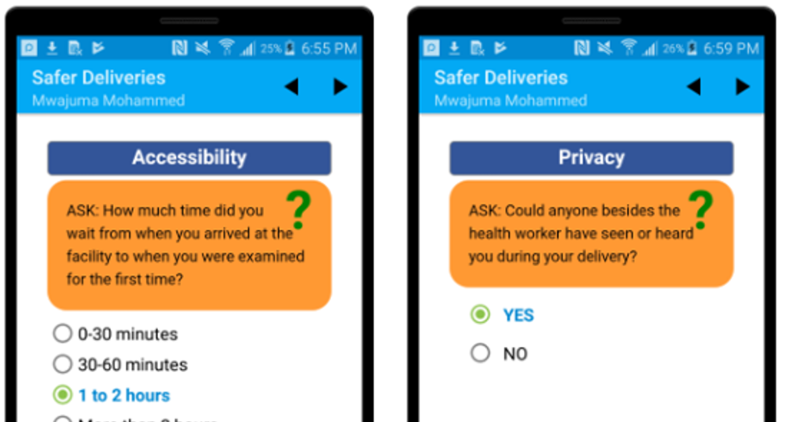
SOLUTION SPOTLIGHT: Beneficiaries share about their experience at a facility including wait time, accessibility, privacy and treatment through Citizen Feedback functionalities.
These eight challenges are common in healthcare programs and there are many ways to work to address them. We’ve outlined here a few examples of how we’ve addressed challenges, but in order to really understand the interventions, we take a deep look at the stakeholder involvement. What is the Client’s role and benefits to digital solution interventions? What specific activities do Providers practice? How do Managers evaluate performance for program monitoring and feedback? What do Data Services staff do to improve integration and data quality? Stay tuned in future blog posts.

